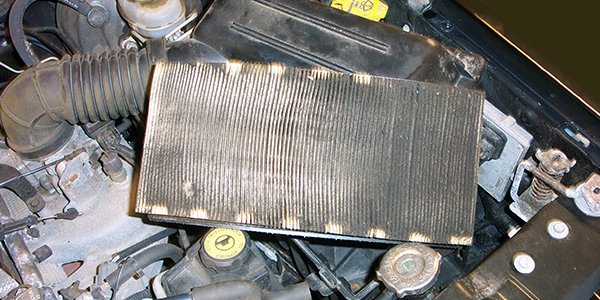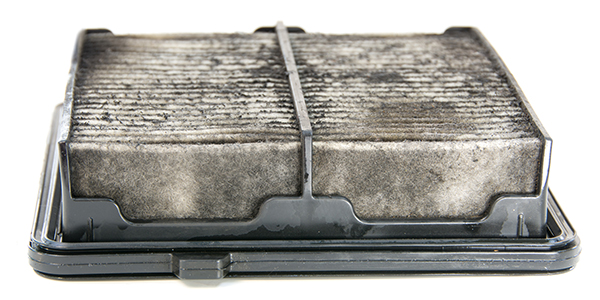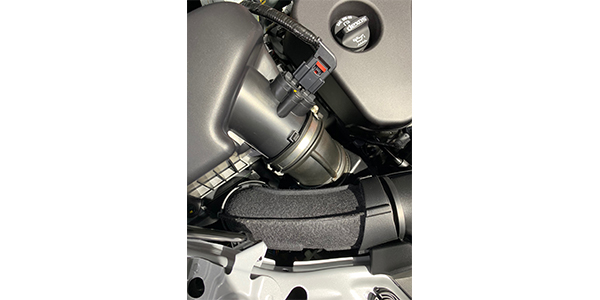
Unlike a carbureted engine, today’s cars’ electronic fuel injection systems can control many factors including the precise amount of fuel needed to operate as close to stoichiometrically perfect as possible – which is neither too rich nor too lean and allows the engine to use as much oxygen as possible. But one thing EFI can’t control is the amount of air that flows into the engine. That is predicated by the engine design, whether it is turbocharged or supercharged and how well the air flows from outside the engine through the air filter and past the MAF sensor and into the combustion chamber.
While the MAF sensor reads the amount of air flowing past it into the cylinders, the O2 sensors are reading if the mixture is rich or lean, which, of course, you know already. But the kicker with trying to diagnose whether an air filter is affecting performance is to see if the Long Term or Short-Term Fuel Trims have changed. If the air filter is clogged with dust and debris from many miles of, say, driving down unpaved roads to your country house, you may have lowered the performance of your vehicle and not even noticed. As we mentioned earlier, unlike a carbureted engine, the ECM will compensate in “closed loop,” as long as the sensors are working correctly, to take away fuel for the lower mass of air being sucked into the engine. Although it’s not a good idea to go by the fuel trims alone, they can help you determine that in fact, the filter is dirty and should be replaced. The performance loss is negligible on an EFI equipped vehicle, but that doesn’t mean that it’s running at the optimum level.

We’ve seen tests on the internet (so you know it’s true!) comparing various types of air filters and then testing the output on a dyno. One YouTube video host tested out three different types of air filters from OE to aftermarket replacement to oiled cotton style. The YouTuber also used a dirty filter to test the baseline OE filter against. The results were less than impressive on the surface. But the bottom line is that a dirty filter did make a difference in performance. The test vehicle made -1.8 hp less than the clean stock filter and -1.2 less torque. The numbers are not huge, but only produces about 150 hp in stock trim.
Going back to our stoichiometric ratio, which is 14.7:1 for a gasoline engine, the fuel trims are based off this ideal air-fuel mixture. If the closed loop sensors (MAF and O2) read that the system is running lean (less air means a higher AFR), then it will automatically subtract enough fuel to bring it back to the ideal air-fuel ratio as mentioned above. When the engine is running lean, there is less fuel in the oxygen that gets sucked into the combustion chamber for making power. In this case, the AFR might be 16.5: 1, but the reading for Short Term and Long-Term Fuel Trim will be shown as -2 or +2, depending on the conditions. Short term fuel trims are continually going up and down by small amounts to adjust to the ideal AFR. Over time, the STFT will create a pattern that is averaged out for the LTFT reading. If the long term is reading lean, but not lean enough to kick off a code, then there’s a strong chance that the system is chocked, by which we mean the air filter is dirty.

Of course, fuel trims are not a sure-fire test for a dirty air filter, but it can help to confirm with cold hard data, that the element needs to be replaced. In the analysis of the performance cotton filter, the YouTuber concluded that it did make a significant gain in horsepower at nearly five hp in his testing. With more air in, the computer will richen the AFR to meet the ideal stoichiometry; this, in turn, creates more power as the engine is continually trying to burn just enough fuel and air to leave no deposits (exhaust by-products, NOx) behind.
So, the next time you get a customer in for a filter change, and you’re not sure if he or she needs it, check the fuel trims and then decide if it’s necessary. If you have a good history on the vehicle and know when the last filter was replaced, it may not be required to go through the motions of checking fuel trims if there are enough miles between service. But conditions vary for each customer and the environment in which they live and drive their vehicle every day. The air filter does a big job if you put into context the fact that it filters about a swimming pool’s worth of air for each gallon of fuel burned.













